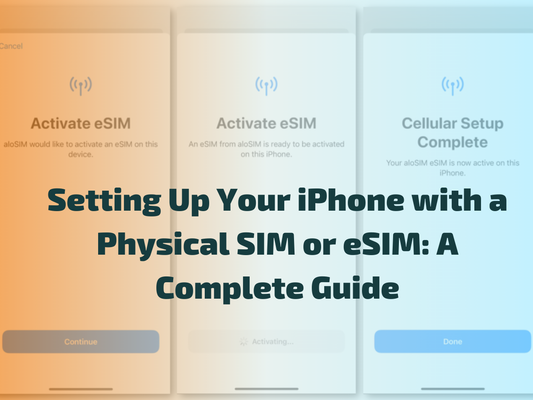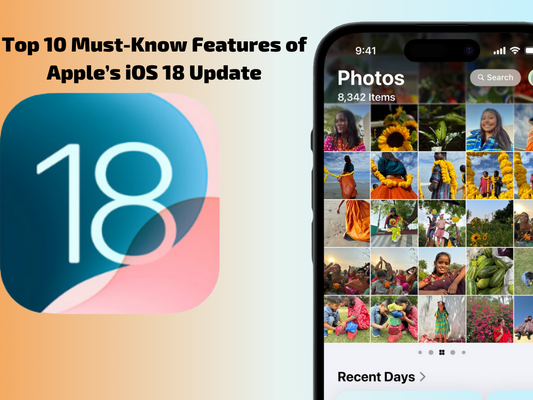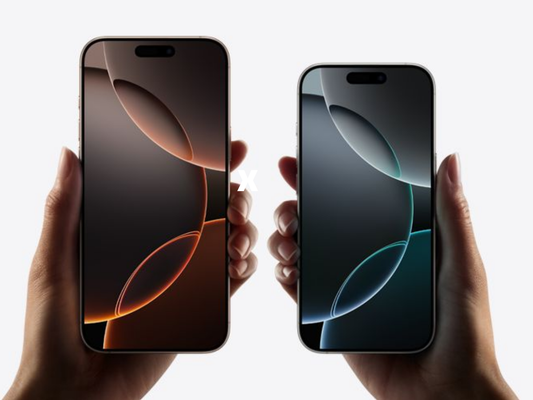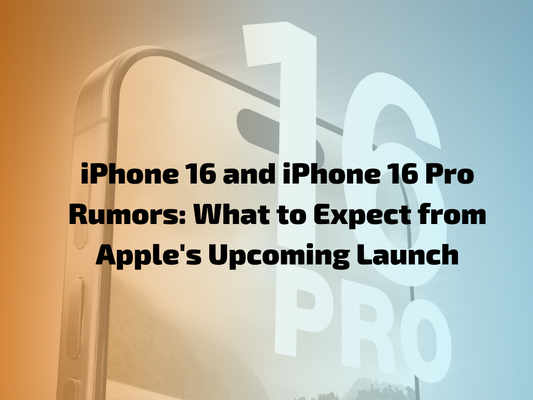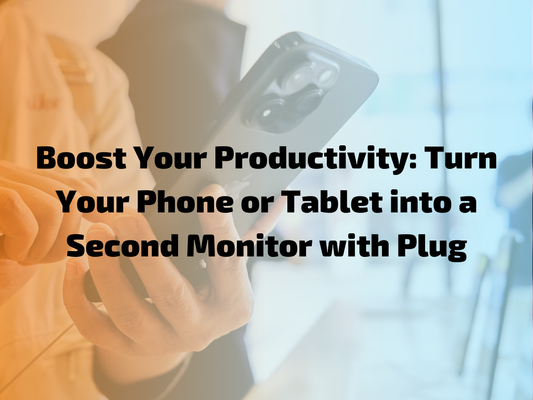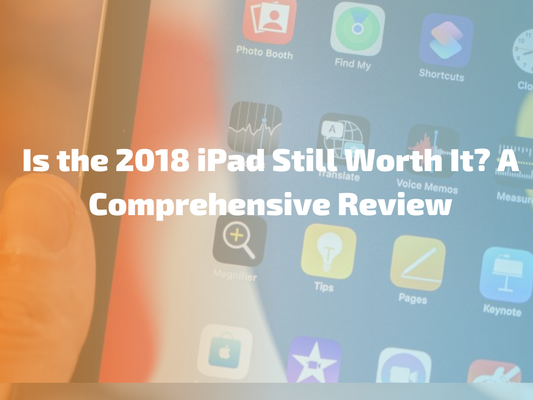
iPhone 11 vs iPhone Xs
Updated on | 14 mins readComparing the iPhone Xs and iPhone 11
Apple's iPhone lineup has always been highly anticipated by tech enthusiasts and smartphone users alike. Two standout models that have garnered attention in recent years are the iPhone Xs and the iPhone 11. Both devices boast noteworthy features and capabilities, making it difficult for users to decide which one to choose. In this article, we will delve into the details of these two smartphones, comparing their specifications, design, performance, camera capabilities, and software, to help you make an informed decision.
Understanding the Basics: iPhone Xs and iPhone 11
Before we dive into the comparison, let's take a moment to understand the basics of the iPhone Xs and iPhone 11. The iPhone Xs was released in 2018 as an upgrade to the previous year's iPhone X. It features a 5.8-inch Super Retina OLED display, a dual-camera system, and the powerful A12 Bionic chip.
On the other hand, the iPhone 11 was introduced in 2019 as the successor to the iPhone XR. It sports a 6.1-inch Liquid Retina LCD display, a dual-camera setup, and is powered by the A13 Bionic chip, which is Apple's fastest chip to date. Now, let's get into the nitty-gritty of these devices.
Key Specifications of iPhone Xs
Starting with the iPhone Xs, let's explore its key specifications. The device boasts a 5.8-inch Super Retina OLED display, which delivers stunning colors and sharpness. Whether you're watching videos, playing games, or browsing the web, the display on the iPhone Xs provides an immersive visual experience.
Under the hood, the iPhone Xs is powered by the A12 Bionic chip, known for its exceptional performance and energy efficiency. This chip enables seamless multitasking, smooth graphics, and faster app launches. Whether you're editing photos, playing graphically-intensive games, or using augmented reality apps, the A12 Bionic chip ensures a lag-free experience.
The iPhone Xs features a 12-megapixel dual-camera system, offering optical zoom, portrait mode, and enhanced low-light capabilities. With optical zoom, you can capture detailed close-up shots without compromising image quality. Portrait mode allows you to take stunning photos with a depth-of-field effect, making your subjects stand out. Additionally, the enhanced low-light capabilities ensure that you can capture clear and vibrant photos even in challenging lighting conditions.
Security is a top priority for Apple, and the iPhone Xs incorporates Face ID for secure authentication. With Face ID, your face becomes your password, allowing you to unlock your device, authenticate purchases, and securely access apps and data with just a glance.
Key Specifications of iPhone 11
Now, let's turn our attention to the key specifications of the iPhone 11. With its 6.1-inch Liquid Retina LCD display, the device offers vibrant visuals and excellent viewing angles. Whether you're scrolling through social media, watching movies, or editing photos, the display on the iPhone 11 delivers accurate colors and sharp details.
Under the hood, the iPhone 11 is powered by the A13 Bionic chip, ensuring lag-free performance and efficient multitasking. The A13 Bionic chip is Apple's fastest chip to date, capable of handling demanding tasks with ease. From gaming to video editing, the iPhone 11 can handle it all without breaking a sweat.
In terms of camera capabilities, the iPhone 11 shines with its dual-camera system consisting of a 12-megapixel wide lens and an ultra-wide lens. The wide lens allows you to capture stunning photos with rich colors and sharp details, while the ultra-wide lens lets you fit more into the frame, perfect for capturing breathtaking landscapes or group shots.
Just like the iPhone Xs, the iPhone 11 also supports Face ID for secure and convenient authentication. With Face ID, you can unlock your device, authenticate purchases, and access apps and data with just a glance, ensuring that your personal information remains safe and secure.
Design and Display Comparison
When it comes to design, both the iPhone Xs and iPhone 11 offer sleek and modern aesthetics. However, there are some notable differences between the two. The iPhone Xs features a stainless steel frame with a glass back, giving it a premium and refined look. In contrast, the iPhone 11 features an aluminum frame with a glass back, providing a more budget-friendly option without compromising on style.
In terms of display, the iPhone Xs boasts a Super Retina OLED display, which offers deep blacks and vibrant colors, resulting in an immersive viewing experience. On the other hand, the iPhone 11 features a Liquid Retina LCD display, which may not have the same contrast ratio as the OLED panel, but still delivers excellent visuals with accurate colors.
Aesthetics: iPhone Xs vs iPhone 11
The iPhone Xs exudes elegance and sophistication with its stainless steel frame and glass back. Its slim profile and rounded corners make it comfortable to hold and use. The device is available in three classic colors: silver, space gray, and gold. Its premium design is bound to turn heads wherever you go.
In contrast, the iPhone 11 has a more playful and vibrant aesthetic. It comes in a variety of fun colors, including black, white, red, yellow, green, and purple. This adds a touch of personality to the device and allows users to express their individuality.
Furthermore, the iPhone Xs features a compact form factor, making it easy to slip into pockets or small bags. Its sleek design seamlessly blends with any outfit or style, making it a fashion-forward accessory. On the other hand, the iPhone 11's slightly larger size offers a more substantial feel in the hand, providing a sense of durability and sturdiness.
Screen Quality and Resolution
When it comes to display quality, the iPhone Xs shines with its Super Retina OLED panel. With deep blacks and vibrant colors, this display offers an unrivaled visual experience. The resolution of the iPhone Xs is 2436 x 1125 pixels, resulting in crisp and detailed visuals.
On the other hand, the iPhone 11 features a Liquid Retina LCD display. While it may not have the same contrast ratio as the OLED panel, it still provides excellent color accuracy and a pleasing viewing experience. The resolution of the iPhone 11 is 1792 x 828 pixels, which is lower than that of the iPhone Xs, but still delivers sharp visuals.
Moreover, the iPhone Xs' OLED display technology allows for true blacks, as each pixel can be individually turned off, resulting in infinite contrast. This feature enhances the overall visual experience, especially when watching movies or playing games with dark scenes. The iPhone 11's LCD display, although not capable of achieving true blacks, compensates with its wide color gamut, ensuring vibrant and lifelike visuals.
Additionally, the iPhone Xs' display supports HDR10 and Dolby Vision, enabling users to enjoy HDR content with enhanced brightness, contrast, and color accuracy. This makes watching HDR movies and TV shows a truly captivating experience. While the iPhone 11 does not support HDR, its display still offers excellent color reproduction and sharpness for everyday use.
Performance and Speed Analysis
Performance is a crucial aspect to consider when comparing smartphones. Both the iPhone Xs and iPhone 11 are powered by Apple's custom-designed chips, which deliver exceptional speed and efficiency. Let's take a closer look at their performance capabilities.
Processing Power: A Look at the Chips
The iPhone Xs is equipped with the A12 Bionic chip, which is incredibly fast and efficient. It's built using a 7-nanometer process, allowing for better power management and improved performance. The A12 Bionic chip enables smooth multitasking, seamless app switching, and lightning-fast load times.
But what exactly does it mean to have a 7-nanometer chip? Well, the smaller the nanometer size, the more transistors can be packed onto the chip. This allows for increased processing power and efficiency. With the A12 Bionic chip, the iPhone Xs can handle even the most demanding tasks with ease, whether it's editing high-resolution photos or playing graphics-intensive games.
On the other hand, the iPhone 11 takes things up a notch with the A13 Bionic chip, which is even more powerful and efficient than its predecessor. Built on a 7-nanometer process, the A13 Bionic chip offers faster CPU and GPU performance, as well as improved machine learning capabilities. This means you can expect blazing-fast performance and smooth operation on the iPhone 11.
But what sets the A13 Bionic chip apart from its predecessor? Well, Apple claims that it is the fastest chip ever in a smartphone. It features a new 8-core Neural Engine, which can perform up to 1 trillion operations per second. This allows for advanced machine learning capabilities, enabling the iPhone 11 to recognize patterns, make predictions, and deliver a more personalized user experience.
Battery Life and Charging Speeds
Battery life is a significant consideration for smartphone users who are constantly on the go. The iPhone Xs features a 2,658 mAh battery, which provides all-day usage under normal conditions. It also supports fast charging, allowing you to quickly juice up your device when in a hurry.
But what exactly does "all-day usage" mean? Well, it depends on your usage patterns. If you're a heavy user who streams videos, plays games, and uses multiple apps simultaneously, you may need to recharge your iPhone Xs before the day is over. However, for moderate usage, the iPhone Xs should be able to last you through a full day without any issues.
With the iPhone 11, you get an even larger battery capacity of 3,110 mAh. This ensures extended battery life, allowing you to go through your day without worrying about running out of power. The iPhone 11 also supports fast charging, meaning you can recharge your device in no time.
But how much longer does the larger battery last compared to the iPhone Xs? Well, Apple claims that the iPhone 11 offers up to 1 hour longer battery life than the iPhone Xs. This means you can enjoy more screen time, whether it's watching your favorite TV shows, browsing the web, or playing games, without having to constantly reach for the charger.
In conclusion, both the iPhone Xs and iPhone 11 offer impressive performance and speed. The A12 Bionic chip in the iPhone Xs delivers exceptional power and efficiency, while the A13 Bionic chip in the iPhone 11 takes it to the next level with even faster performance and advanced machine learning capabilities. Additionally, both devices feature fast charging and extended battery life, ensuring that you can stay connected and productive throughout the day.
Camera Capabilities: A Detailed Comparison
The camera has become one of the most important features in smartphones, and both the iPhone Xs and iPhone 11 deliver exceptional photography capabilities. Let's take a closer look at what each device has to offer.
iPhone Xs Camera Features
The iPhone Xs boasts a dual-camera system consisting of a 12-megapixel wide lens and a 12-megapixel telephoto lens. This setup allows for optical zoom, portrait mode with advanced bokeh effects, and excellent low-light performance. The device also supports Smart HDR, which enhances the dynamic range of your photos, resulting in more detailed and vibrant images.
iPhone 11 Camera Features
The iPhone 11 takes mobile photography to the next level with its dual-camera system. It features a 12-megapixel wide lens and a 12-megapixel ultra-wide lens, allowing you to capture a broader perspective. The ultra-wide lens is perfect for capturing landscapes, architecture, and group photos. The device also supports Night mode, which automatically activates in low-light conditions, delivering stunning photos with enhanced detail and reduced noise.
Software and User Experience
Lastly, let's delve into the software and user experience aspects of the iPhone Xs and iPhone 11. Apple is renowned for its intuitive and user-friendly operating system, iOS, which both devices run on.
Operating System: iOS Updates and Differences
Both the iPhone Xs and iPhone 11 run on iOS, which provides a seamless and secure user experience. iOS offers regular updates, ensuring that your device stays up to date with the latest features and security enhancements. As both devices are relatively recent models, they will receive similar software support and updates.
User Interface: Ease of Use and Navigation
The user interface of both the iPhone Xs and iPhone 11 is designed to be user-friendly and intuitive. The devices feature Apple's iconic home button-free design, relying on gestures for navigation. This allows for a more immersive and streamlined user experience. Whether you're a longtime iPhone user or switching from another platform, you'll find the user interface easy to navigate and familiarize yourself with.
Conclusion
In conclusion, both the iPhone Xs and iPhone 11 offer outstanding features and capabilities. The iPhone Xs impresses with its elegant design, superb display quality, and impressive camera capabilities. On the other hand, the iPhone 11 shines with its powerful A13 Bionic chip, extended battery life, and versatile camera system.
Ultimately, your decision between the iPhone Xs and iPhone 11 will depend on your specific needs and preferences. Consider factors such as display type, camera features, and budget when making your choice. Regardless of which device you choose, you can rest assured knowing that you'll be getting a top-notch smartphone experience with either the iPhone Xs or iPhone 11.

